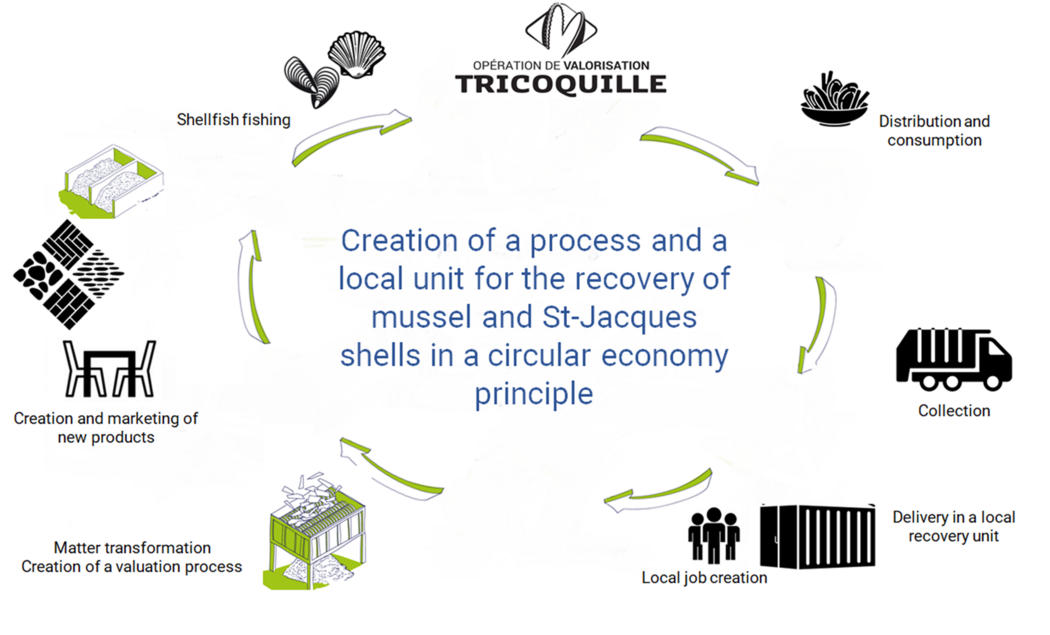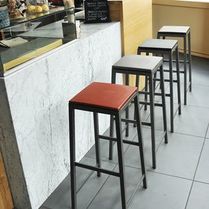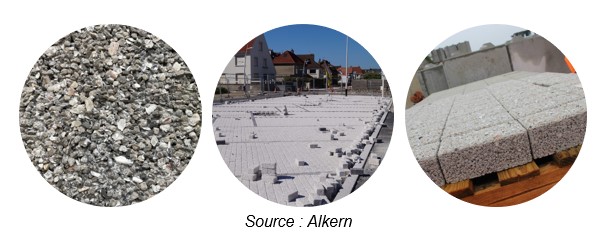Geen bewerkingssamenvatting |
Geen bewerkingssamenvatting |
||
| Regel 25: | Regel 25: | ||
This first evaluation meeting brought together in total 20 stakeholders from different backgrounds: local authorities, the Hauts-de-France region, Alkern, Ecailles de mer and Etnisi: 3 industrial actors who recover scallop, oyster and mussel shells to make different kinds of products, development agencies. Several of the attendees showed a keen interest in going further and the first contacts were established. Additional discussions helped to gather more information on the actors’ current activities, namely the types of shells produced and/or recovered, the origin of the waste stream, the recovery methods used, the actors’ ambitions for the future and their current barriers. | This first evaluation meeting brought together in total 20 stakeholders from different backgrounds: local authorities, the Hauts-de-France region, Alkern, Ecailles de mer and Etnisi: 3 industrial actors who recover scallop, oyster and mussel shells to make different kinds of products, development agencies. Several of the attendees showed a keen interest in going further and the first contacts were established. Additional discussions helped to gather more information on the actors’ current activities, namely the types of shells produced and/or recovered, the origin of the waste stream, the recovery methods used, the actors’ ambitions for the future and their current barriers. | ||
[[Bestand:FACET - example ETNISI.jpg|kaderloos|209x209px]] [[Bestand:FACET - example ALKERN.jpg|kaderloos|594x594px]] | |||
Example prodcut ETNISI Example draining pavements made by ALKERN | |||
<u>Consultation meeting</u> | <u>Consultation meeting</u> | ||
Versie van 28 feb 2023 17:07
Circular solutions for the management and valorization of shellfish waste
Project partner ADEME supported a study aiming to identify deposits and outlets for seashells of Baie de Somme. Following this, the local government carried out a pilot operation for the recycling of seashells from 8 partner restaurants. In the FACET project we wished to investigate the opportunities to use the collected seashells to make products for the tourism sector (e.g. tidal waste collection bins).
In the pilot we:
- secure the seashell recovery channel by removing the barriers for a wide use of local shellfish by-products in the tourism sector: regulatory obstacles on the use of biowaste, identification of a competitive process, shift of tourism actors towards circular practices and procurement;
- and identify the local actors able to carry out all stages of the recovery process (collection, sanitation, shredding, transformation) and to develop new links between them. This could lead to new collections of seashells generated by touristic actors or during touristic events in Baie de Somme and in Hauts-de-France.
The pilot project addresses upstream, restaurants as shell waste providers and downstream, the local government of Baie de Somme -authority for tourism development- and the tourism sites. It aims at removing the barriers for a wide use of local shell waste by-products in the tourism sector: regulatory obstacle on the use of non-inert waste, identification of a competitive process, stimulation of tourist entrepreneurs in changing to circular practices and purchase.
Origin and objective of the project
There is a lot of consumption of shellfish in the Hauts-de-France region, and particularly in the Baie de Somme territory. The waste from the shells is not currently recovered and disposed of as municipal waste. For example, large volumes of shells are collected from restaurants and fishmongers. These shells are buried which has a high cost and environmental impact. Meanwhile, the industrial actors involved in the pilot wish to have a more local procurement of shells, as they currently import them from other regions in France and from abroad (Netherlands). This relocation of procurement will help the local economy, and will have lesser environmental impact in terms of transport. As the tourism sector is facing increasing challenges, it shows a strong ambition to have more sustainable activities, and the recovery of waste generated by tourists in restaurants is a step in that direction.
The objective is therefore to have a more local supply with shellfish waste from the Hauts-de-France region and so introduce circularity in the value chain.
Step by step progress
Evaluation meetings
Within this pilot evaluation meetings were held with several stakeholders: the obstacles all along the local tourism value chain were analysed and discussed. This has allowed setting up baselines.
This first evaluation meeting brought together in total 20 stakeholders from different backgrounds: local authorities, the Hauts-de-France region, Alkern, Ecailles de mer and Etnisi: 3 industrial actors who recover scallop, oyster and mussel shells to make different kinds of products, development agencies. Several of the attendees showed a keen interest in going further and the first contacts were established. Additional discussions helped to gather more information on the actors’ current activities, namely the types of shells produced and/or recovered, the origin of the waste stream, the recovery methods used, the actors’ ambitions for the future and their current barriers.
Example prodcut ETNISI Example draining pavements made by ALKERN
Consultation meeting
In the next steps, the project was refocused on Ecailles de Mer, Etnisi and CA Baie de Somme. They were invited to discuss the links between their activities. The expertise provided by ADEME since 2021 has enabled the territory to find new partners. In particular, a innovative synergy has been created with Ecailles de Mer for the recovery of a new type of shell (oysters) which led in 2022 to testing with this actor a less expensive inerting system.
The diagnostic
The exchanges with partners enabled to have a better understanding of the situation. In complement, a thorough regulatory analysis was made as shell waste is a very specific type of waste. The regulation applied is different whether flesh and soft bodies have been removed or not from the shell. This has led to the production of a diagnosis that stated the potential for shell waste collection (deposit quantification), the barriers to collect and valorize this resources, including regulatory barrier, the ecosystem of actors that could be involved in the project, etc.
Read more about the diagnosis of seashells recovery in Haute-de-France in the tourism sector
The design proposal and the business plan
Based on the results of the diagnosis, an action plan was defined to take further steps in moving from a linear model to a circular model. The plan was translated it into a business model integrating the circular economy for each of the private tourism operators involved.
The collection of the shell waste from the restaurants was made in 2019. During the course of FACET, the main pilot action led by the local Government with the support of ADEME’s experts consisted in lifting the regulatory barriers to treat the shell waste, then in manufacturing prototype tide bins from mussel by-products. 8 bins were installed along the beach of Baie de Somme in August 2022. It encourages tourists to pick up the plastics in the sea line and deposit it in the bins.
Moreover, a working group was organised with some stakeholders in the tourism sector to present them various eco-designed products from shellfish waste and discuss which ones would be the most useful for the sector: engraved plates, candles, vases, lamps, knives, ready meals container, incorporation into the production of subsea suits that could be used in the cold Manche came up mainly. A particularly interesting idea in terms of tourism emerged. The Baie de Somme is home to the largest colony of seals in France. It is an emblematic animal of the region. Some actors came up with the idea of producing, from mussel and oyster shells, decorative objects in the shape of seals, as a marker of the territory. These objects would be sold to tourists in the tourist offices of the Baie de Somme. The project is intended to materialize and could be supported by ADEME.
The monitoring report
The monitoring report provides figures that show the evolution of the project from the start to the end of FACET and that will be used by the involved stakeholders for further developments. The indicators include:
- The number and nature of actors involved in the pilot project: project leader, local governments, associations, restaurants, processors;
- Quantitative objectives in terms of reducing non-recovered waste and in terms of waste collected;
- Objectives in terms of derivative products purchases;
- The number of measures taken and/or envisaged;
- The number of synergies identified thanks to the project.
Collection and recovery of oyster shells from the Dunkirk oyster festival
In addition to the project in Baie-de-Somme, the FACET project facilitated the creation of links between other actors of the Hauts-de-France region, and enabled the collection and recovery of oyster shells from the Dunkirk oyster festival.
The Dunkirk oyster festival is organised every year end of September/early October by the association La Bouée Bleue. It generates approximately 8 tonnes of shells every year. In 2022, the FACET project brought together the Greater Dunkirk Council, La Bouée Bleue and Ecailles de Mer and led to the collection of the oyster shells generated at the festival. The oyster shells were separated from the rest of the waste generated at the event, were collected by the waste services of the Greater Dunkirk Council and sent to recovery at Ecailles de Mer.





